Have you ever wanted to start listening to dance music, but have no idea where to start?
Electronic Dance Music is a tough field to break into, especially without some help. It’s full of vocabulary, genre labels, and artists that all have distinct identities and sounds, but to someone just trying to get into the music it’s almost impenetrable. It’s clearly a rising movement in music, but differentiating between trends and even identifying what you like is a daunting task. This introduction should help dispel some of that.
This is a guide to the basics. We came up with the major EDM genres you should know and explained them. Where they started, who’s a major player in the genre right now, what it sounds like and how fast it is. It’s a rough template for all the music out there but should teach you more than enough to get started.
Consider this your jumping off point to the next big thing.
Words by Midas & Constant Gardner
Hit “next” or press shift+right to read the guide.
1.
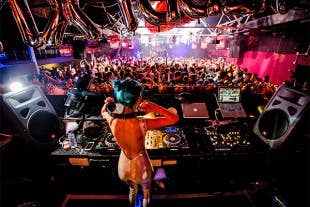
Image via Wikimedia Commons
House
Notable Artists: Avicii, Swedish House Mafia, David Guetta
Tempo: 120-130bpm
Whole books have been written about the history and creation of House music, and it is a constantly evolving and mutating sound that has so many different branches, and has so thoroughly permeated both dance and mainstream music that there is no precise definition. Suffice to say, the sound was born in Chicago in the early 80’s, taking influences from the percussion found in the highly popular disco music of the day, as certain producers focused their tracks around a repetitive rhythm. And that’s what House all comes down to, and what all tracks are built around – a repetitive 4/4 beat (which you might also hear described as “four to the floor”). Sound-wise all this means is that there is a kick drum on every beat, which is often accompanied by a snare or clap on the second and fourth beat of each bar, and various hi-hat patterns filling out the rest of the track.
As House music became a part of the mainstream, and a multiplicity of sub-genres sprung up, this original sound has had all manner of synths, melodies, vocals and even rapping laid over it, but the basic markers of House music, and it’s influence on much current Top 40 music remain easy to hear if you know what you’re looking for. Just listen out for that crisp 4/4 kick underpinning everything, which often drops out as the track builds up to a crescendo, and then comes back in bigger and louder as everyone waves their hands in the air and has a good old party. All producers and DJs have a lot to thank House music for, as it opened the door for mainstream acceptance of EDM, and is overall still the most popular from of dance music – just take a look at festival line-ups across the world, or ask the millions of people who flock to Ibiza every year!
Swedish House Mafia – “Greyhound”
Maya Jane Coles – “Get Away (Subb-An Deeper Rmx)”
Kingdom – “Mind Reader (Todd Edwards Dub)”
2.

Image via Wikimedia Commons
Electro
Notable Artists: Jesus, Dada Life, Justice, Crookers, Boys Noize, Sebastian
Tempo: 128bpm (125-135)
A trend you’ll see is that genre names in electronic once meant a whole host of things that have now been distilled into a more singular meaning. Electro is a particularly good example; it’s existed in one form or another since the late 1970’s and has been incorporated into a wide array of styles and acts. However, while in the past electro could have been referring to the electronic drum patterns, the breakbeats or the use of a sampler, the current electro scene is identifiable by one thing: synths.
Electro is used as a signifier and a genre in itself, but anything post-2005 and identified as electro is going to be utilizing full-bodied synths as its foreground. If a song is characterized by a huge synth hook or riff, chances are it’s a strain of modern electro. It’s the typical soundtrack for big, fun raves (although dubstep is giving it a run for its money), somewhere between the danceability of house and the anthemic qualities of techno, with a decidedly hard edge thrown in for good measure.
Electro reached its peak in the critical arena just a few short years ago, and has since been a genre that has perpetuated a penchant for formula over innovation. However, that doesn’t stop it from being some of the funnest music out there and easily your best bet of a genre if you want to find straight bangers and have a blast.
Tommy Trash – “Cascade”
Justice – “Phantom Pt II (Boys Noize Remix)”
Mord Fustang – “Lick The Rainbow”
Dada Life – “Unleash The Fucking Dada”
3.

Image via Wikimedia Commons
Dubstep
Notable Artists: Hatcha, DMZ (Loefah, Mala & Coki), Plastician, Skream, Benga, Burial, Kode9, Caspa, Pinch, Joker
Tempo: 140bpm
For such a young genre, Dubstep has gone from strength to strength in the past 10 years, and now takes its place at the top of festival bills and on the front covers of magazines – but where did it all come from and what is it?
Dubstep was born around the turn of the century as an underground reaction to the commercialization of UK garage music, which had been seen to have moved away from it’s darker instrumental sound to a more vocal based and radio friendly sound. Producers such as El-B, Horsepower Productions and Oris Jay who were predominantly based in South London, grew disinterested with this commercial garage sound, and started to create experimental instrumental remixes, called “dubs”, of 2-step garage releases – and from these humble beginnings, dubstep was born.
By the time the term dubstep was starting to be used, and showcased alongside other forward-thinking music at the seminal FWD>> club night around 2002 (at this point still a tiny, entirely underground scene), some producers had taken the stylistic basis of these remixes and began to create original tracks. These dark, sparse, bass heavy productions (many of which were one-off records cut purely for Hatcha to play on his Rinse FM radio show) served as the launchpad for all manner of experimentation and introduction of new influences, but remain a blueprint for the dubstep sound. The hallmarks of dubstep are a tempo of 140bpm, a syncopated rhythm, with a “shuffling feel”, which is partly caused by the snare or clap on the third beat of every bar, and of course lots of bass – either ribcage rattling sub-bass, or the now more typical, oscillating wobble bass.
As dubstep has moved from underground hype to radio play, then across the globe and eventually into the sphere of popular music, it has been a hotbed for innovation and experimentation with genre lines being blurred, and producers stepping out from the darkness of minimal 2-step dubs and adding colourful synths, rhythmic variations, vocals and anything else you care to think of. Long may the experimentation continue.
Loefah – “Disko Rekah”
Benga & Coki – “Night”
Joker – “Digidesign”
Burial – “Raver”
Nero – “Promises”
4.
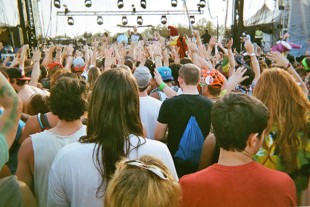
Image via Wikimedia Commons
Brostep
Notable Artists: Skrillex, Rusko, 12th Planet, Excision, Datsik, Bassnectar
Tempo: around 140bpm
There have been myriad offshoots from the “original” dubstep sound, but the most divisive (and one of the most popular) is the aggressive, harsh sound that has been somewhat pejoratively called “brostep”. British producers like Rusko and Caspa popularised the wobble side of dubstep (especially with their Fabriclive mix) to the point that it captured a large portion of the standard weekend night club scene in the UK, but this sound was then taken to extremes by (predominantly) American producers, and has become one of the most popular styles of Dance music in the US, appealing especially to college bro’s.
Brostep has the same basic song structure as dubstep, but replaces the traditional sub-bass with robotic sounding, wildly fluctuating mid-range frequencies, which are in a similar register as the electrical guitar in heavy metal. This comparison with heavy metal also extends to the feel of the songs, which are lurching, in-your-face affairs, more suited to a festival mosh pit than a dark, intimate club. Spearheaded to a certain extent by the hugely divisive Skrillex, brostep is here to stay, and will continue to cause arguments, which generally centre around the authenticity of what is being called dubstep, the fact that many new fans think ‘dubstep equals Skrillex’ and the uncovering of a once underground scene to the mass market. I’ll leave it to Skream to give us the solution to all this anti-brostep anger:
“Either listen to it or don’t listen to it. There’s still nights playing the stuff those people (original dubstep fans) want to hear. It’s just bitchiness, it really is.”
Tracks:
Skrillex – “Scary Monsters & Nice Sprites”
Rusko – “Woo Bost”
Skrillex ft. 12th Planet – “Needed Change”
5.
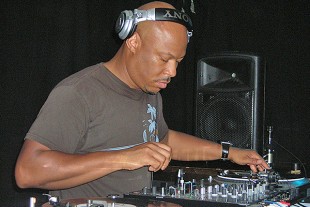
Image via Wikimedia Commons
Techno
Tempo: varied
Notable Artists: The Field, Disjokke, Carl Craig, Underworld, Jeff Mills
Techno is what people generally call electronic music if they have no idea what electronic music is. The truth of the matter is that techno is currently a relatively small and deep subgenre, difficult to break into and without much mainstream popularity in America at all. It’s also a major, major cornerstone of modern dance music, which is what led to the application of it’s title to a much larger movement, as well as the fact that it’s an apt misnomer.
Techno is about progressions. It’s the genre where you can hear 15-minute songs that sound, to the untrained ear, like it’s just going “untz untz untz untz.” It is often based on loops, so it will be the same sounds over and over again. But minimalist changes are added constantly, slowly moving the song from one place to the next. It’s got a high barrier of indoctrination – definitely ta style of music you have to work at to “get,” but there is a dedicated cult of supporters behind the genre that claim that what the best artists within the movement are doing is genius work in electronic composition, and it’s hard to ignore them.
SCB – “Loss”
Omar S – “Here’s Your Trance, Now Dance”
DJ Hell ft. P. Diddy – “The DJ”
Tony Senghore & Brodinski – “Anagogue”
6.
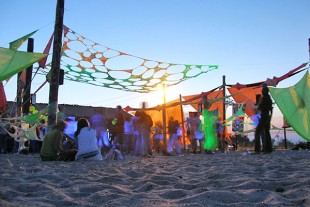
Image via Wikimedia Commons
Trance
Notable Artists: Tiesto, Hardwell
Tempo: varied (125-150 bpm)
Trance sounds like a scary name for a genre, but it’s actually the most accessible electronic music subsets in terms of straight pop appeal. It focuses on anthems – huge tracks with synth riffs catchier than anything on the radio and big, exaggerated buildups. Trance has no shame. It’s reached international ubiquity and has catapulted producers like Tiesto to the world superstar stage. Outside of America it is the kind of genre that packs stadiums. Here it is the genre, hand in hand with electro, that has most influenced the recent surge of EDM fusing into pop music in the Top 40.
Hardwell – “Cobra”
Tiesto – “He’s A Pirate”
7.
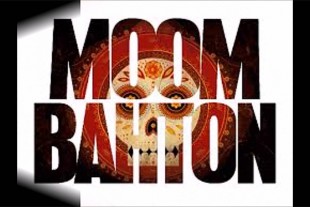
Image via YouTube
Moombahton
Notable Artists: Dave Nada, Munchi, Dillon Francis
Tempo: 110bpm
The newest genre craze to hit the scene, the story of Moombahton is now legend. It all started with Dave Nada, a DJ out of DC. He was playing an impromptu house party for a bunch of kids skipping school that day. The kids all liked a certain style of Latin music, which Nada found out was played at around 110bpm. He took a track he liked, Afrojack’s “Moombah,” and slowed it down from 128bpm down to the sweet spot of 110bpm. It was a hit.
The tempo change completely shifted the song’s feel, as expected. That feel, however, was too good to be expected. Nada spawned a whole genre out of slowed down Dutch House*, one that became the slowest genre in dance music with a distinctly Latin feel. Artists like Dillon Francis quickly hopped on the trend and made their own niche for the movement, crafting their own sounds within these invented structural parameters.
The 110bpm is quite a lot slower than any other genre discussed here. While the rule of thumb in the electronic world seems to be faster = funner, with moombahton that theory is thrown on its head. It is, in all seriousness, the perfect genre to grind to. As that is the only way guy-girl couples dance together anymore, if a DJ notices pairing off and can fit moombahton in the set it results in general craziness. Sex on the dancefloor.
*Dutch House is a form of house music characterized by a high-pitched whistling carrying its tune. Afrojack is the biggest name in the subgenre. When it is slowed down the whistle becomes deeper and elongated, and the bass rhythms do the same.
Dillon Francis – “Masta Blasta”
The Beatards – “Tramp (Clockwork Moombahton Remix)”
Toddla T – “Take It Back (Dillon Francis Remix)”
Munchi – “Sandungueo”
8.

Image via Wikimedia Commons
Disco
Notable Artists: Krystal Klear, Gigamesh, Louis La Roche, Madeon
Tempo: 120-130bpm
Although disco is a time-honored form of dance music that’s existed, in one form or another, since the 70’s, the major form it exists in today is generally referred to as nu-disco. That being said, nu-disco is still very closely tied to its roots, and is generally just disco, funk, or boogie that has been adapted and reinterpreted to modern dancefloors and rhythms.
One way to think of disco is as a classicist form of EDM, in that it’s recognizably more organic and even when it is produced entirely on a laptop it’s the kind of dance music you can almost imagine recreated with real instruments. Piano, strings, horns and vocals (sampled and live) are all often incorporated heavily into disco. When “bass” is referenced in electronic music, it’s assumed that the synthetic percussion or wall of distortion in dubstep is what that means, with disco it’s more likely to be the riff from a bass guitar or double bass. It’s funkier and often contains a little more verve to it than the standard entries into other genres.
As far as other descriptors go, disco remains a very diverse genre. Although the majority of nu-disco falls in the standard 120-130bpm range, it’s not uncommon to find disco ranging much, much slower. It is rare to hear a disco track much faster, though. Above all, it’s best to remember that disco is a lot of fun. Old-fashioned in its own way, it’s a genre that ditches the newer moulds and instead of trying to turn every dance floor into a rave, strives to keep it a dance floor.
Gigamesh – “Burnin'”
Avicii & Sebastien Drums – “My Feelings For You (Treasure Fingers Remix)”
Louis La Roche – “Los Angeles”
9.
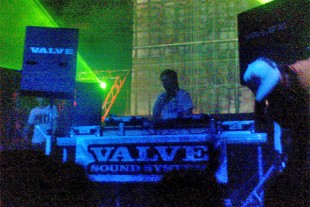
Image via Wikimedia Commons
Drum & Bass
Notable Artists: Andy C, Netsky, High Contrast, Goldie
Tempo: 155-175bpm
Drum & Bass is the genre pushing the highest tempos we’re going to cover in this article. Like dubstep, d&b is an offshoot of the garage and jungle age, and also like dubstep, is characterized initially by it’s unusual percussion, as well as it’s speed and heavy bass lines.
Clocking in around 160-180bpm, the genre is fast. You notice immediately because the percussion in these songs are primarily defined by quickly sequenced hi-hats (sometimes snares), generally on every 16th or 32nd note. That’s getting technical, but if you listen to a sample it will make sense almost immediately – the quick, high-pitched drums are what you are going to notice immediately in almost all drum and bass, with synths, vocals and bass organized around that frenetically paced rhythm.
Kanye West – “Flashing Lights (High Contrast Remix)”
Zinc – “Wile Out (DJ Marky & SPY Remix)
Sub Focus – “Could This Be Real (D&B Mix)”
Additional Note: Drumstep is the bastard child of D&B and dubstep. For reference, it’s essentially brostep sped up to drum & bass speeds. It goes impossibly hard.
Gauntlet – “Mary” (Drumstep)
10.
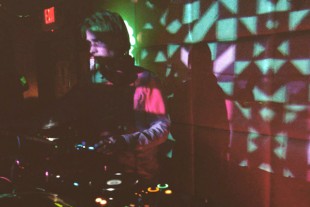
Image via Wikimedia Commons
Bass Music
Notable Artists: Pearson Sound, Mosca, Boddika, Joy O, Blawan, Scuba, Pangaea, James Blake, Rustie, Autonomic, Addison Groove, Lunice, Four Tet, Kingdom DJ’s: Ben UFO, Jackmaster, Oneman
Tempo: Variable
It is often the most innovative, forward-thinking music that defies easy classification, and nowhere is this more true than in the world of dance music. There is still fantastic music being made that sticks rigidly to the formula of house, techno, dubstep or drum & bass, but it is where all these meet that you will find the most exciting and interesting strains of underground dance music. Bass Music as a term is impossible to define beyond the obvious point that there is generally a fair bit of bass involved, but suffice to say, if you hear something that doesn’t fit comfortably into one of the categories above, it can probably be called bass music.
Whilst this scene can be bewilderingly broad and often confusing, much bass music bears the hallmarks of either house or techno, but with the underlying propulsive weight and song structure of dubstep. The output of pioneering label Hessle Audio for example is almost exclusively 130bpm but with the build/bass drop structure of dubstep, or rhythmic patterns that are variations on the 4/4 beat – essentially bridging the gap between house and dubstep. Boddika and Joy O, with releases like “Mercy” are doing the same thing to techno and dubstep, while Autonomic have been viewing drum & bass through a house lens.
On top of these house/techno/dubstep mutations, which can be hard to get into for the casual fan, there is an even more fun and party orientated strain of dance music which draws influences from absolutely everywhere, and is often characterized by colourful synths and a maximal, full on production style that appeals to a casual party-goer as much as an underground music head. Look to producers like Rustie and Lunice and DJ’s like Jackmaster and Oneman if you want bass music that is aimed squarely at the dancefloor, music that is straight up fun whilst remaining innovative. Such is the speed of change, and level of experimentation in bass music that it’s a full time job to keep up with it, but these tunes below, and the artists named above, should get you started
Joy O – “Hyph Mngo”
Blawan – “Getting Me Down”
Pangaea – “Hex”
Kingdom – “Fogs”
Addison Groove – “Savage Henry”
Boddika – “Up And Dance”

